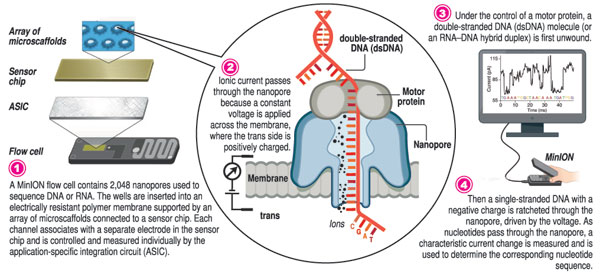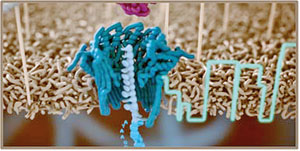News
Nanopore sequencing – rapid insights in real time

Anything, anywhere, anytime and by anyone – is how the nanopore sequencing technology developed by Oxford Nanopore is being described.
Dr. Lakmal Jayasinghe recalls how when the pandemic began in Wuhan, the Chinese government labs used nanopore sequencing and how they shipped a container-load of sequencers from Oxford to China in that first week. Thereafter, their popularity spread across the world and now more than 100 countries use this technology.
He details the advantages of nanopore sequencing as being affordable and good for low-resource countries; portable which means that these devices do not need a lot of lab space; and being a real-time data analysis. This real-time analysis is important as one does not have to wait for the conclusion of the experiment to get the results.
“This is the only sequencing technology that offers real-time analysis (for rapid insights), in fully scalable platform formats from a small pocket size to large population scale. Another advantage is that it can analyse DNA or RNA and sequence any length of fragment to achieve ‘short’ to ‘ultra-long’ read lengths,” says Dr. Jayasinghe.

Two electrodes are insulated by the membrane. The single nanopore in the membrane allows ion flow. Any blocking of that ion flow gives a drop in the current. Sequences of DNA block to give different currents. The DNA is moved through the pore to give the signal of the strand.
Their wide range of sequencers include Flongle for on-demand, rapid smaller tests and can be used in the field or a lab, while the pocket-sized MinION is a powerful and portable sequencing device that can deliver high volumes of long read sequence data.
Meanwhile, the benchtop GridION can run up to five MinION Flow Cells at a time, on-demand, for larger genomics projects and PromethION is the largest format for nanopore sequencing, designed to offer on-demand use of up to 48 Flow Cells – capable of delivering more than 10 Tb of sequence data in a full run and is now being used in population-scale sequencing projects.
 Dr. Jayasinghe explains that all their sequencing devices use flow cells (‘chips’) which contain an array of tiny holes – nanopores – embedded in an electro-resistant membrane. Each nanopore corresponds to its own electrode connected to a channel and sensor chip, which measures the electric current that flows through the nanopore.
Dr. Jayasinghe explains that all their sequencing devices use flow cells (‘chips’) which contain an array of tiny holes – nanopores – embedded in an electro-resistant membrane. Each nanopore corresponds to its own electrode connected to a channel and sensor chip, which measures the electric current that flows through the nanopore.
When the DNA strand passes through a nanopore, the current is disrupted to produce a characteristic ‘squiggle’ depending on which sequence of bases is present in the nanopore at any given time. The squiggle is then decoded using base-calling algorithms to determine the DNA or RNA sequence in real time, he says, painting an image of water (in this case the current) flowing through a pipe. When an object enters the pipe, the flow of water is disrupted, just as DNA disrupts the current as it passes through the nanopore.
Earlier, when a Professor at Harvard University discovered nanopores 35 years ago, everyone assumed it was an academic exercise. Nobody believed they could make a commercial product. Those days the biological membrane was unstable like a soap bubble and no one thought it could be made stable to allow shipping around the world, adds Dr. Jayasinghe.
The best way to say that you found the home of your dreams is by finding it on Hitad.lk. We have listings for apartments for sale or rent in Sri Lanka, no matter what locale you're looking for! Whether you live in Colombo, Galle, Kandy, Matara, Jaffna and more - we've got them all!

